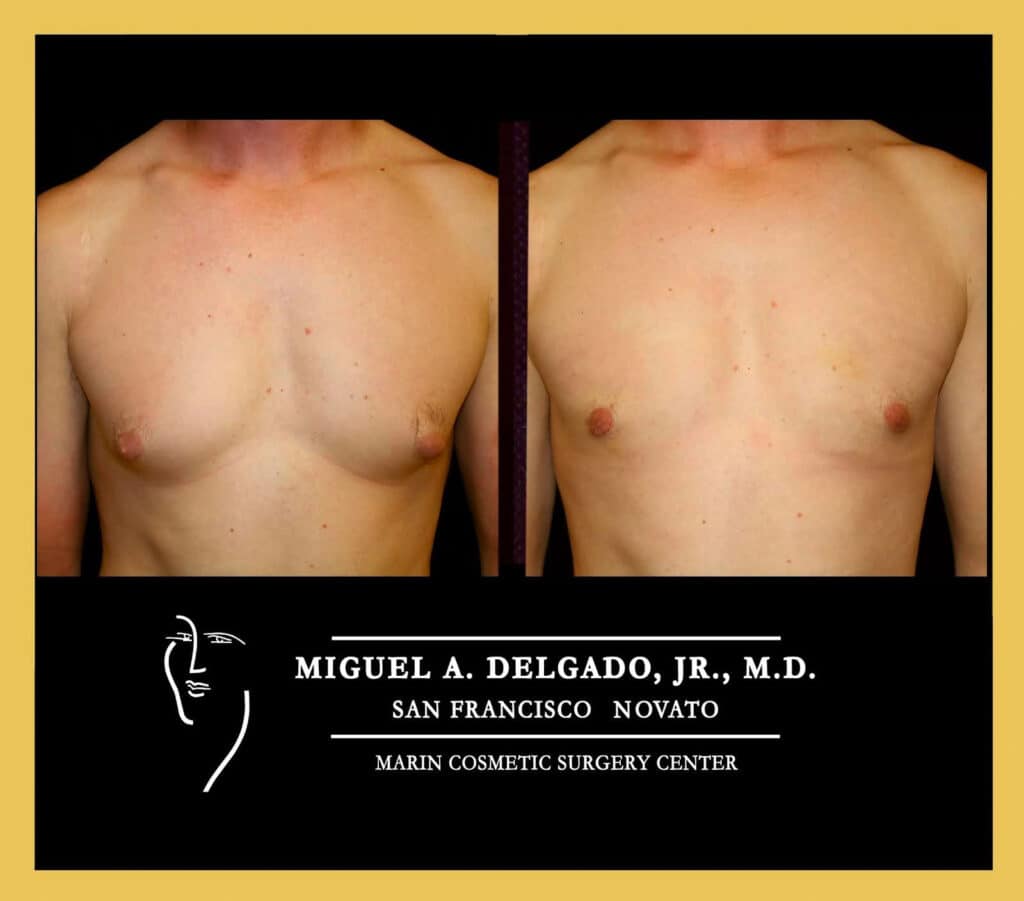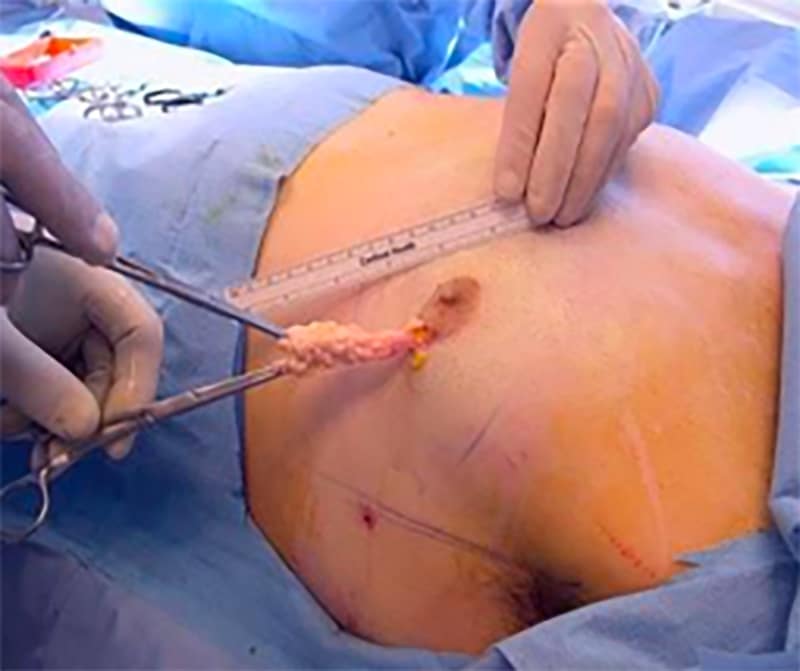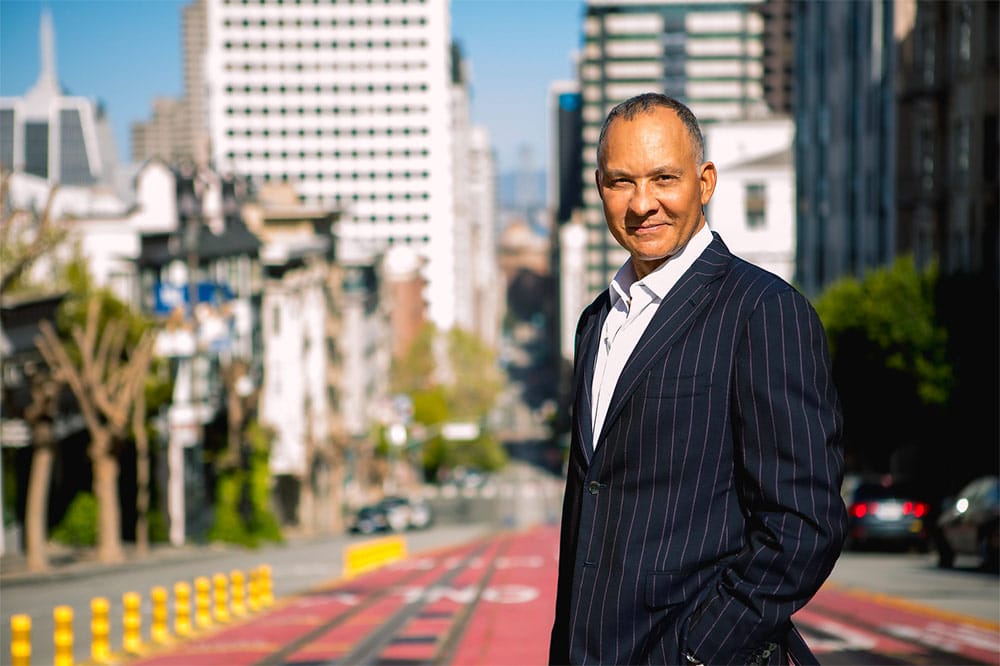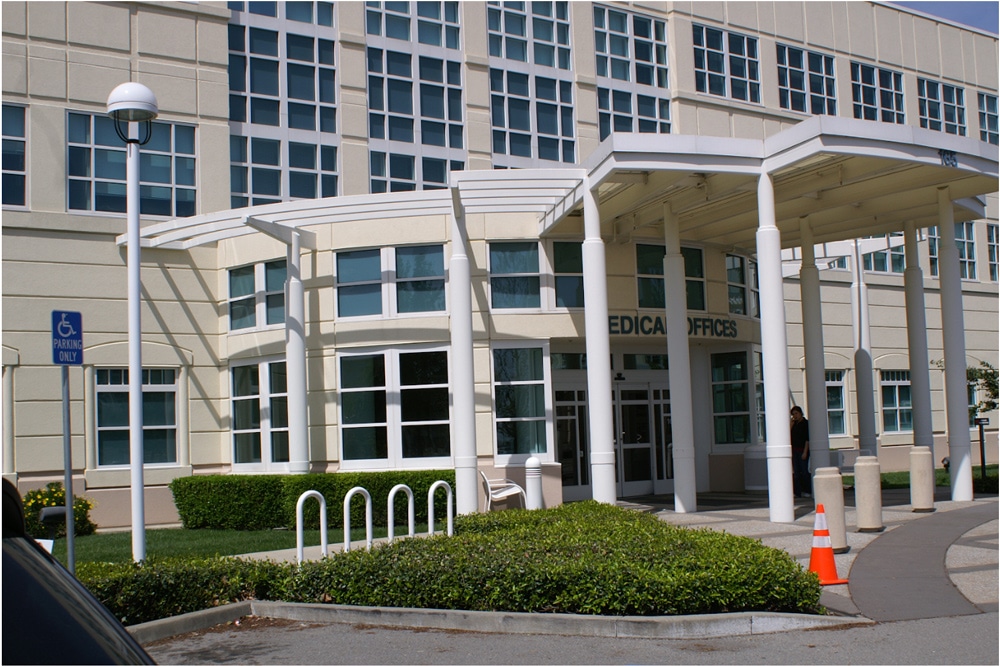How to Reduce Puffy Nipples: Diet, Exercise, and Surgery Solutions

Hormonal imbalances, an accumulation of excess fat, or the medical condition known as gynecomastia can lead to men experiencing swollen nipples and enlarged breasts. The strategies for dealing with this issue range from dietary and exercise adjustments to surgical interventions.
Key Takeaways
- Puffy nipples in men can be due to hormonal imbalances, excess body fat, or steroid use, which causes excess breast tissue growth, called gynecomastia. Gynecomastia is a common underlying condition affecting up to 30% of males at some point in their lives.
- Non-surgical treatments, such as dietary changes, specific chest exercises, and lifestyle modifications, can effectively manage puffy nipples by addressing hormonal imbalances and excess fat.
- For severe cases where non-surgical methods are inadequate, surgical options like male breast reduction surgery involving tissue excision and liposuction can provide effective and long-lasting results.
Understanding Puffy Nipples in Men: The Role of Excess Breast Tissue

Men can develop puffy nipples due to various reasons, such as hormonal imbalance, carrying excess body fat, or even steroids. Hormones play a critical role in this issue. An increase in estrogen levels beyond what is typical can lead to the growth of mammary glands, resulting in gynecomastia. This condition entails enlarged male breasts and may arise at any age from causes like hormonal shifts, genetic factors, obesity or certain medications.
Understanding these precipitating elements will help you on your path towards appropriate treatments aimed not only at reducing those bulging appearances, but also boosting personal esteem. Some potential remedies include:
- Therapies adjusting hormone imbalances
- Programs promoting loss of weight
- Regimens involving targeted exercise for strength in your torso area.
- Procedures extracting unwanted adipose using liposuction techniques
- Operations aimed at reducing overly full chests by gynecomastia surgery
Before embarking on any treatment plans, seek guidance by health specialists and a plastic surgery specialist to evaluate the cause and severity of the gynecomastia. The breast tissue and excess breast fat will be evaluated, and male breast cancer risk will be assessed. The following will also be examined:
- Hormonal imbalance by looking at hormone testosterone levels via blood tests
- prescription medications and certain drugs like anabolic steroids
- herbal supplements like lavender oil
- complete physical exam looking at weight gain or weight loss
Healthy diet to prevent Puffy Nipples

A variety of non-surgical methods exist to treat puffy nipples, including diet adjustments, targeted chest exercises, and lifestyle habits. When excess body fat or hormonal imbalances are the root causes of the condition, these strategies can prove effective. By mastering how to address puffy nipples with these tactics, individuals often witness considerable enhancement in both their physical appearance and self-confidence.
Many people have discovered that, by adopting such measures, they can experience notable progress in alleviating puffy nipples without surgery.
Dietary Changes
To address puffy nipples through non-surgical avenues, consider the following dietary changes:
- Lower sodium consumption and steer clear of processed foods to minimize excess fat in the chest area.
- Choose whole grains over their refined counterparts to help decrease fat around the chest.
- Enhance your diet with abundant raw fruits and vegetables for a healthier chest appearance and general health.
Including high-fiber food options like beans and whole grains can improve digestion and help manage weight. This change is beneficial for altering how puffy nipples appear. Steer clear from processed items laden with added sugar since these may lead to additional breast tissue growth. By altering what you eat, hormonal imbalances can be corrected. Still, it could also reduce excess fatty deposits, giving way to a more sculpted appearance of the breasts and tighter tissue across the chest area.
Medications
Dr. Delgado’s review of gynecomastia treatment with medication on Gynecomastia.org provides valuable insights, offering reassurance about the safety and effectiveness of these options.
Exercise and Chest Workouts

Integrating targeted chest exercises into your workout regimen is a highly effective strategy for diminishing puffiness around the nipple area. Strengthening the chest muscles with specific movements, such as push-ups, bench presses, and chest fly, can greatly enhance the look of puffy nipples. These workouts focus on the pectoral muscles, creating a more toned and defined appearance in your chest.
Strength-building exercises play a crucial role in reducing body fat and enhancing muscle definition. Regular physical activity, especially routines that target chest development, can bring about significant changes. Incorporating barbell bench presses, chest press machine exercises, and push-ups can effectively address nipple puffiness, leading to a more confident body image.
Lifestyle Modifications
The development and worsening of puffy nipples can be significantly influenced by the choices one makes in one’s lifestyle. It is vital to steer clear of anabolic steroids, as they may disturb hormonal equilibrium, potentially causing or aggravating this condition. It’s essential to confer with a healthcare professional, such as an endocrinologist, about any medications being taken since some can lead to puffy nipples.
To prevent and alleviate puffy nipples, sustaining a healthy lifestyle that includes consistent physical activity and effective weight control is paramount. Embracing habits conducive to good health, while avoiding agents that could adversely affect your hormones, plays a crucial role in bettering this situation. With these adjustments in both diet and exercise routines forming an all-encompassing strategy for dealing with puffy nipples, there is hope that surgical intervention may not be necessary.
Gynecomastia Surgery Solutions for Puffy Nipples
In cases where non-surgical approaches fail to effectively treat puffy nipples, gynecomastia surgery alternatives are considered practical. The process of male breast reduction surgery typically combines liposuction with tissue excision to successfully remove excess breast tissue and yield enduring results. This surgery addresses excess breast tissue to recontour the chest and achieve optimal cosmetic results.
For individuals who have been unable to achieve satisfactory changes in their weight gain through diet and exercise, this procedure offers significant benefits by targeting the unnecessary buildup of breast tissue.
Breast Tissue Excision Techniques
Surgery for gynecomastia typically involves breast gland tissue excision to eradicate both excess fat and glandular tissue from the chest. An incision is made at the bottom half of the areola to accomplish this. This “Webster incision” facilitates access to and extraction of undesirable glandular tissue. In cases where gynecomastia is more severe, it may be necessary to make broader incisions to eliminate additional skin and fat, which helps achieve improved contouring and repositioning of both nipples and areola. These broader incisions also help remove excess skin to achieve improved contouring. This surgical technique is called a double incision mastectomy with a free nipple graft.
Dr. Delgado has advanced his surgical techniques, tailoring them explicitly for complex situations that will not respond adequately to conventional liposuction methods alone. He recognizes that while liposuction can successfully remove fatty tissues surrounding the breast glands, it fails to address issues stemming from excess glandular tissue.
Pull-Through Technique

A specialized surgical approach known as the pull-through technique is used to address puffy nipple gynecomastia. This procedure significantly reduces visible scars. The breast tissue and fat can be removed through a minor incision made along the border of the areola. The specialized technique offers a concealed incision yet efficient resolution for male breast enlargement.
Pre-operative Considerations
It is crucial to evaluate your overall health and perform the required testing before proceeding with male breast reduction surgery. This preparatory stage of assessment ensures that you are an appropriate candidate for this surgical procedure, which can be carried out safely.
Initial Consultation and Medical History
Your initial discussion with Dr. Delgado is essential to preparing for your gynecomastia surgery. In this meeting, he will assess your overall health and any pre-existing conditions that could impact the surgery’s results. It’s crucial to be transparent about your current medical issues, medications, or supplements since they can affect both the surgical process and the healing period.
Establishing a trusting relationship with Dr. Delgado is imperative to express concerns and develop realistic expectations comfortably. For effective dialogue:
- Talk about any past surgeries you’ve had, along with their outcomes.
- Bring up if there is a family history of gynecomastia.
- Feel free to ask questions and request explanations, so you have a full grasp of what this procedure entails.
- Communicate what you hope to achieve post-surgery.
Through candid communication, it becomes possible to customize the surgical plan.
Diagnostic Tests
Before gynecomastia surgery can take place, it’s common to undergo diagnostic evaluations, such as blood tests and hormone level examinations. Conducting these tests is crucial for uncovering potential health concerns or hormonal imbalances that may cause gynecomastia.
Determining the specific levels of hormones like estrogen and testosterone allows a surgeon to create an effective treatment strategy explicitly tailored to your situation. If there is a hormone imbalance, Dr. Delgado will refer you to an endocrinologist for further evaluation and treatment.
Post-Surgery Recovery

Securing optimal outcomes depends on the period of recovery following surgery. In this phase, it is crucial to adhere to steps such as pain management, donning a compression garment, and observing post-surgery care instructions.
Understanding what lies ahead during the healing journey can help you prepare yourself, ensuring your recovery unfolds smoothly. Your active participation in this process is crucial.
Immediate Post-Operative Care
Following surgery, rest is crucial for the initial 2-3 days. During this time, patients are advised to engage only in mild ambulatory activities, such as light walking around the house, and adhere to certain precautions.
- Abstain from showering until the drains are removed, about three days.
- Anticipate at least one week from work, mainly if it involves strenuous physical labor.
- Ice packs can help lower the pain and swelling in the chest region. Ensure that the packs do not come into direct contact with the skin.
- Chest and back elevation is critical to reduce fluid build-up and swelling.
For an effective recovery post-surgery, consider these strategies:
- Ensure you sleep elevated (on your back) and maintain a raised position at approximately a 45-60 degree incline during the two weeks immediately following surgery.
Refrain from scratching around your chest area, which could lead to complications after surgery.
Eliminate nicotine and alcohol consumption two weeks before and after surgical procedures.
Adhering strictly to these recommendations can effectively support your healing process.
Long-Term Recovery and Maintenance
It’s crucial to remember that refraining from strenuous physical activity for at least two weeks post-surgery is not just a recommendation, but a key factor in preventing complications and ensuring a smoother recovery. Most patients can resume their usual exercise regimen after 4-6 weeks, but exercises targeting the chest should be postponed initially.
Swelling within the chest area typically diminishes several weeks past the six-week milestone post-surgery. Your ongoing commitment to regular physical activity and a nutritious diet plays a crucial role in preserving the results of your surgery. This dedication to health is not just beneficial; it’s essential in achieving enduring satisfaction and bolstering confidence regarding your physical appearance.
Risks and Complications
As with any operation, male breast reduction surgery carries risks and the possibility of complications. These may comprise infections, suboptimal wound healing, and unaesthetically pleasing scars. To mitigate these potential outcomes during the procedure, surgeons carefully make incisions following the natural contours of the breast and provide comprehensive care instructions after the surgery. However, patients must understand these risks and adhere strictly to their surgeon’s guidance, which empowers them to take an active role in their recovery.
Tied to this type of breast enhancement surgery are specific hazards such as:
- Altered sensation in either nipple or overall breast area, which could last briefly or persist indefinitely
- Unevenness or irregular shaping within the contouring of breasts
- More serious yet infrequent adverse effects include conditions like deep vein thrombosis and issues related to cardiac health or lung function. There is also a risk for fat necrosis.
By recognizing these associated dangers prior to proceeding with gynecomastia treatment procedures, individuals considering this operation can thoroughly weigh their options before committing. This respect for their informed decision-making ensures they have clarity on what lies ahead (both during recovery and beyond), allowing them to maintain comfort throughout their journey with an informed mindset.
Psychological Impact and Self-Esteem
Gynecomastia can profoundly affect psychological well-being, typically causing:
- A heightened sense of embarrassment and unease regarding the appearance of one’s chest
- The avoidance of specific attire or physical engagements due to feelings of shame or discomfort
- Noticeable disturbances in life quality that complicate socializing and professional dealings.
Male breast reduction surgery has the potential to:
- Significantly elevate self-esteem while diminishing feelings of self-awareness
- Encourage engagement in previously shunned activities
- Expand clothing options without concern for fit around the chest area
- Ease symptoms associated with depression and anxiety stemming from dissatisfaction with chest aesthetics
- Foster a comprehensive enhancement in mental health and overall happiness
Numerous men express an uptick in body confidence following male breast reduction surgery. This renewed surge in self-confidence is often influential across many aspects of their experiences.
Choosing the right Plastic Surgeon
Selecting a qualified surgeon is crucial for achieving the desired results in gynecomastia surgery. It’s vital to choose a plastic surgeon who holds board certification and belongs to respected institutions such as:
- The American Society of Plastic Surgeons (ASPS)
- The American Board of Plastic Surgery (ABPS)
- The International Society of Aesthetic, Plastic Surgery (ISAPS)
Specialized training and extensive experience in performing gynecomastia procedures are not just desirable, they are essential. These qualifications are a guarantee that the plastic surgeon is not only capable of performing the surgery safely, but also meeting your aesthetic expectations. Therefore, it’s crucial to ensure that the surgeon you choose possesses these qualifications.
Credentials and Experience
It is essential for a plastic surgeon to possess:
- In-depth surgical education consisting of at least six years of post-medical school training
- Successful completion of thorough oral and written examinations
- Certification from the American Board of Plastic Surgery (ABPS) or accreditation by the Royal College of Physicians and Surgeons of Canada confirms their proficiency in various areas, including shaping the chest area.
Assessing prior outcomes through comparison photographs before and after surgery can assist you in setting realistic expectations regarding aesthetic results. A competent cosmetic surgeon should not only perform male breast reduction surgeries frequently but also stay up-to-date with advanced techniques to achieve optimal results. Dedication to their craft and continual learning are critical for ensuring top-tier outcomes from gynecomastia surgery.
Dr. Delgado’s Expertise in Male Breast Reduction Surgery

Renowned globally for his proficiency in gynecomastia surgery, Dr. Miguel Delgado holds over three decades of expertise and a highly respected reputation in this field. Esteemed as the best plastic surgeon by San Francisco Magazine, he has become an international draw for patients seeking expert care in male breast reduction surgery. He is also known to be the go-to specialist when other surgeons encounter complex cases of gynecomastia.
Tailoring each surgical experience to meet individual requirements, Dr. Delgado’s portfolio of services includes:
- Male breast reduction
- Liposuction targeted at male breast tissue
- Reduction procedures for both nipples and areolas
- 40% of his patients are gynecomastia revision for patients unhappy with their surgery performed elsewhere.
With hundreds of 5-star testimonials and commendations attesting to his skill, Dr. Delgado has earned widespread acclaim from satisfied patients who have undergone gynecomastia surgery under his distinguished care. This testament underscores why many consider him the preferred professional for their male breast reduction needs.
Gynecomastia.org and Support Resources
Gynecomastia.org is the leading online resource for individuals affected by gynecomastia, offering credible information and support. Established in 1986, the website provides many resources, including articles, treatment options, and a forum where people can share their experience. This community support can be invaluable for those navigating the challenges of gynecomastia.
Dr. Miguel Delgado serves as the medical director of Gynecomastia.org, further enhancing the credibility and expertise available on the site. His involvement ensures the information is accurate and up-to-date, reflecting the latest advancements in gynecomastia treatment. For those seeking reliable information and support, Gynecomastia.org is an essential resource.
Marin Cosmetic Surgery Center

At Marin Cosmetic Surgery Center, hailed as the “Gynecomastia Center of Excellence,” we offer advanced surgical amenities that have received accreditation from ASF and Medicare. Our facility upholds stringent safety standards, ensuring every procedure meets optimal levels of care and providing our patients with a sense of security and confidence in their treatment choices. The center’s acclaim stems from Dr. Delgado’s unparalleled skill set and focus on gynecomastia surgery.
Our clients at Marin Cosmetic Surgery Center receive numerous benefits, including:
- Expertise provided by Dr. Delgado, who possesses a well-established reputation for excellence
At Marin Cosmetic Surgery Center, each client receives personalized attention designed to meet their specific requirements, making them feel valued and understood. We are dedicated to maintaining excellent quality in our surgical operations and overall client service, providing our patients with reassurance and confidence in our service.
Summary
In summary, grasping the importance of managing puffy nipples is vital for elevating self-esteem and enhancing life satisfaction. Individuals can gain confidence and embark on a more rewarding life by pursuing surgical or non-surgical options to tackle this issue.
Frequently Asked Questions
What causes puffy nipples in men?
In men, the presence of swollen nipples can stem from a variety of factors including an imbalance in hormones, the utilization of steroids, excessive body fat, and the use of certain drugs.
For accurate identification and management of this condition, it is crucial to seek advice from a medical expert.
Can diet and exercise help reduce puffy nipples?
Indeed, by altering your nutrition and engaging in specific chest exercises, you can decrease body fat and fortify the muscles of the chest. This may lead to a reduction in the prominence of puffy nipples.
What surgical options are available for treating puffy nipples?
Surgery for gynecomastia, which includes procedures such as tissue excision and liposuction, is employed to address puffy nipples by eliminating surplus breast tissue and adipose.
What are the risks associated with gynecomastia surgery?
Before deciding on gynecomastia surgery, it is critical to have a conversation with your surgeon about the possible risks associated with the procedure. These risks can include infection, complications in wound healing, alterations in nipple sensation, and even the chance that additional revision surgery may be required.
How can I choose the right surgeon for gynecomastia surgery?
Ensure you select a board-certified plastic surgeon who possesses specialized expertise and training in gynecomastia surgery by scrutinizing their qualifications and previous surgeries to guarantee the highest standard of care.
